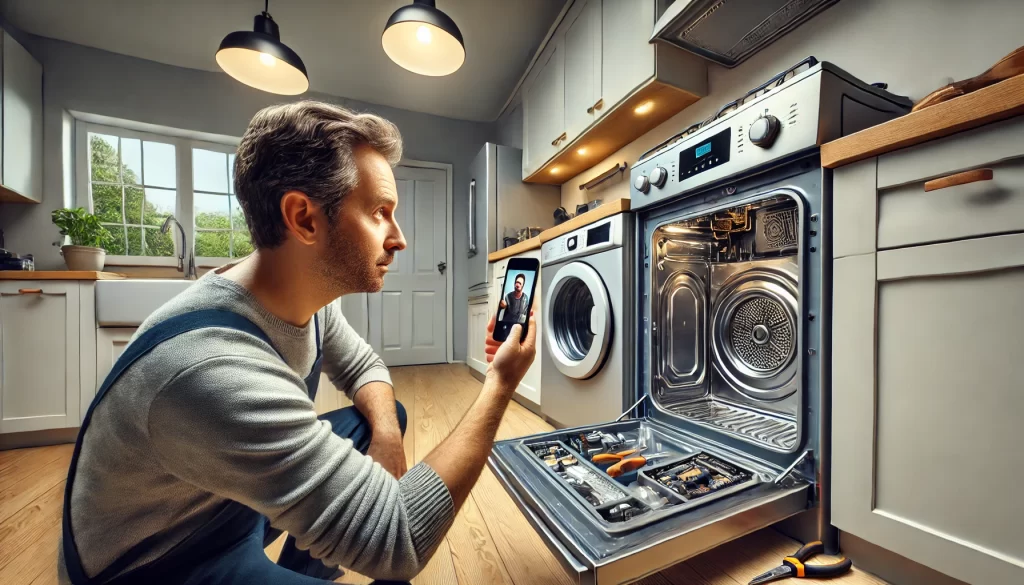In the world of home repairs, timing is everything. Whether your furnace cuts out during a cold snap or your dishwasher floods the kitchen before guests arrive, you need help—fast. That’s where efficient service calls with video come in.
This game-changing solution lets pros see the problem before they arrive, which means fewer delays, better prep, and faster fixes. Here’s how video service calls are transforming home repairs—and why DIYers and homeowners should embrace this tech-forward approach.
What Are Video Service Calls?
Video service calls are remote support sessions where you use your smartphone or tablet to show a technician your repair issue in real time. Think FaceTime meets home repair.
These calls help:
- Diagnose problems before dispatch
- Save money on unnecessary trips
- Speed up actual on-site repairs
- Provide DIY help for minor fixes
And if you’re tackling repairs yourself, this extra layer of expert support can mean the difference between a quick fix and a frustrating mess.
How Video Improves Traditional Service Calls
1. Faster Diagnoses
Instead of waiting days for someone to show up, you get real-time feedback right away. A tech can often tell what’s wrong in minutes just by seeing the issue.
2. Better Prepared Technicians
When a tech knows exactly what part is needed, they show up with the right gear. No more “we’ll have to order that part and come back next week.”
🛠️ Pro Tip: During the video call, shine a flashlight on the problem area and zoom in on any labels, error codes, or components.
3. Lower Costs
Some repairs don’t need a house call at all. A pro might walk you through a simple reset or show you how to replace a $10 part yourself.
Common Repairs That Work Great Over Video
- Thermostat issues
- Tripped breakers or GFCI resets
- Dishwasher error codes
- Furnace filter changes or pilot light relights
- Garbage disposal resets
- Leaky faucet diagnosis
These are quick wins that video techs can often resolve without ever stepping foot in your home.
What You’ll Need for a Video Call
- A smartphone or tablet with a working camera
- Decent lighting (a flashlight helps!)
- A stable internet connection
- Clean access to the area in question
Also, be ready to describe the issue and any steps you’ve already tried.
💡 Hack: Use a phone mount or prop it up safely so your hands are free to follow instructions.
When to Use Video vs. In-Person
Use Video If:
- You’re unsure whether a repair needs a visit
- The issue just started and isn’t urgent
- You want DIY guidance
- You’re prepping for a service visit and want to ensure the tech brings the right tools
Call in a Pro If:
- There’s water, gas, or smoke involved
- Electrical panels need work
- A system needs full replacement
- Safety is in question
Remember: video service calls don’t replace pros—they supercharge them.
DIYers: Level Up Your Home Repair Game
Video service calls don’t just help with emergencies. They’re also gold for DIYers looking to:
- Learn how to do a repair themselves
- Confirm a diagnosis before buying parts
- Get pro-level guidance without a full service bill
Imagine FaceTiming a master plumber while swapping out a P-trap under your sink. That’s the kind of support that makes DIY smarter.
The Future of Efficient Service Calls
The integration of video into home repair isn’t just a trend—it’s the new standard. As more pros adopt remote support tools, smart homeowners will get faster help, more accurate repairs, and lower costs.
Want to get ahead of the curve? Start with a video-first mindset next time something breaks. Your wallet—and your sanity—will thank you.
Get More Smart Home Fixes
Looking for more ways to modernize your home repair strategy, look no further than chilllpros.com.

